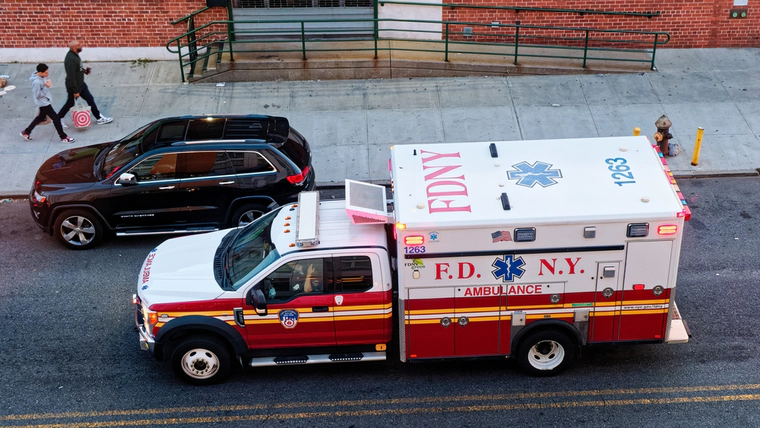Opioid Users Are Overwhelmingly Exposed to Fentanyl
Addicts are split on fentanyl, making the public health crisis of fentanyl all the more difficult to treat. Whether people with an addiction are actively trying to avoid fentanyl or whether they’re actively seeking it out, the drug is killing them.

Surveys show people who struggle with addiction are not all of the same mind on the issue of fentanyl. Most addicts are actively trying to avoid it, but some seek it out intentionally. The fact that some people with a substance use disorder are intentionally looking for fentanyl is quite alarming because this drug is at least ten times more potent than heroin and 50-100 times more potent than morphine. Further, the National Institute on Drug Abuse reports almost 70,000 annual drug deaths are attributed to fentanyl overdoses, or about two-thirds of all drug-related deaths.1
Whether people with an addiction are seeking it out intentionally or attempting to avoid it, the drug is increasingly being mixed into other drugs, making it extremely difficult for users to know what they are consuming.
Survey Findings Show Most Opioid Users are Getting Fentanyl, Whether They Want It Or Not
According to research and survey data from NYU School of Global Public Health, people who use drugs in New York City are injecting illicit drugs that contain fentanyl. The researchers were able to determine that around 80% of injection drug users in NYC tested positive for fentanyl, even though just 18% said they had intended to use fentanyl.2
Alarmingly, fentanyl was the most common drug discovered on drug tests among 300 intravenous drug users in NYC. About 83% of users tested positive for fentanyl, including 46% who tested positive for both fentanyl and heroin and 54% who tested positive for fentanyl without heroin. According to the researchers, the majority of the drug users in the study said their drug of choice was heroin, not fentanyl. Most users said they were actively trying to avoid using fentanyl because of how potent and deadly it is.

The study was done to understand how aware NYC drug users are of the prevalence of fentanyl in the drug supply, fentanyl being the most common drug involved in fatal drug overdoses in the city every year since 2017. According to the findings, nearly 25% of those in the study group had overdosed at least once in the previous six months, with 21% of them reporting no fentanyl use but still testing positive for it. From that, one could extrapolate that at least one in five NYC drug users is overdosing on fentanyl even as they actively attempt to avoid consuming the drug.
Some Data Suggests Other Addicts are Actively Seeking Out Fentanyl
While the long-held understanding that most addicts are trying to avoid fentanyl still has some merit, the survey results revealed, alarmingly, that some addicts are intentionally seeking out fentanyl despite the drug’s known risks.
But why? During the survey, the 18% of participants who said they’d actively sought out fentanyl also commented on how previous opioids (heroin, prescription drugs) were not producing the same highs as before. The NYU School of Global Public Health concluded its survey by noting how users are developing a heightened tolerance to their opioids of choice, leading some users to actively seek out fentanyl.
Addicts do this at their peril, because fentanyl is responsible for more drug deaths per year than all other drugs combined, according to NIDA.
The NYU School of Global Health study is not the only one that points to a gradual shift in addict preference around opioids. Another report, published by NBC News, showed how some users are not getting the same results from heroin and other drugs as they used to, so they’re gradually shifting to actively seeking out fentanyl rather than avoiding it as they had in years prior.3

That report cited multiple health experts and addiction treatment counselors across the country who noted alarming spikes in the number of people reporting regular use of fentanyl. “Two years ago, I would have thought this was crazy,” said Dr. Akhil Anand, a physician at the Cleveland Clinic who specializes in addiction. Dr. Anand went on to say he’s seen a surge in the number of people in Ohio who list fentanyl as their primary drug of choice.
From the Midwest to the South, interest in fentanyl is growing. “Some people thought they were buying heroin on the street, and it turned out to be fentanyl,” said Mary Ward, president of the McLeod Addiction Center in Charlotte, North Carolina. “They ended up liking it better.” According to Ward, many drug users shift to fentanyl and stay with it because they are no longer satisfied with the high they get from heroin.
Other experts noted the alarming increases in drug users who are smoking fentanyl as opposed to injecting it. While smoking the drug may be more appealing to people with an addiction, there’s no evidence to suggest this approach to using the drug is any less dangerous than injecting it. Unfortunately, if a more appealing method of using the drug becomes mainstream within addict circles, more people may begin using it.
Why Is Fentanyl So Dangerous?

The rapid spread of fentanyl across the drug supply and into addicts’ bodies is cause for alarm. Fentanyl is dangerous because it is extremely potent. The drug is at least ten times more potent than heroin (it can be up to 50 times stronger), and it is 50-100 times more potent than morphine.4
Fentanyl began as a pharmaceutical drug, typically prescribed by doctors to treat severe pain, especially after surgery and for advanced-stage cancer. This version of the drug is addictive and can be quite dangerous, especially when not used exactly as prescribed.
However, most of the overdoses caused by fentanyl today are the result of illicit fentanyl, or fentanyl made in clandestine drug labs, trafficked throughout the nation, and sold illegally. To make their drugs more potent, dealers have been adding fentanyl into batches of other types of drugs, including heroin, cocaine, and meth. There have even been reported cases of counterfeit (fake) pharmaceutical opioid painkiller pills that are actually various chemicals laced with fentanyl. Some reports have suggested cannabis has been found with fentanyl in it.
Opioid Overdoses and the Need for Treatment
According to the Centers for Disease Control and Prevention, more than 100,000 Americans have been dying from drug overdoses every year for several years in a row.5 Based on the most recent findings, at least two-thirds of those deaths are caused by or linked to fentanyl or synthetic opioids of comparable potency. “As the proportion of drug overdose deaths involving fentanyl continues to increase, it’s important to monitor how often people are exposed to fentanyl and any changes in preference for fentanyl among people who use drugs,” said the lead author of the NYU School of Global Public Health’s study, Courtney McKnight.6 McKnight is a clinical assistant professor of epidemiology.
Some key takeaways to consider are:
- The presence and use of fentanyl have spread across the country at a rapid rate.
- Fentanyl is being added to the opioid and non-opioid drug supply, often without addicts knowing.
- Most opioid addicts test positive for fentanyl, even as many are actively trying to avoid the potent drug.
- Intentional use of fentanyl is also escalating as many opioid users now crave the powerful high caused by fentanyl.
These factors combine to create an increasingly dangerous situation for people in the U.S. who struggle with drug addiction. Also, these factors explain why drug overdose deaths continue to climb and why fentanyl continues to be the root cause behind a growing majority of those deaths.
Addiction has never been more dangerous than it is today. If you know someone who is using drugs and cannot stop on their own, please help them find and enter a treatment center as soon as possible.
Sources:
-
NIDA. “Drug Overdose Death Rates.” National Institute on Drug Abuse, 2023. nida.nih.gov ↩︎
-
SD. “Understanding intentionality of fentanyl use and drug overdose risk: Findings from a mixed methods study of people who inject drugs in New York City.” Science Direct, 2023. sciencedirect.com ↩︎
-
NBC. “Once feared, illicit fentanyl is now a drug of choice for many opioid users.” NBC News, 2022. nbcnews.com ↩︎
-
CDC. “Fentanyl Facts.” Centers for Disease Control and Prevention, 2023. cdc.gov ↩︎
-
CDC. “U.S. Overdose Deaths In 2021 Increased Half as Much as in 2020 – But Are Still Up 15%.” Centers for Disease Control and Prevention, 2022. cdc.gov ↩︎
-
NYU. “More Than 80% of People Who Inject Drugs Test Positive for Fentanyl—But Only 18% Intend to Take It.” New York University, 2023. nyu.edu ↩︎





 ®
®